Hidden in Plain Sight: the Art of Acrostic Jewelry
The ABC's of this whimsical Victorian trend
It’s no secret that I’m a huge fan of Victorian jewelry trends: snake jewelry, Lovers-Eye jewelry, mourning jewelry, and the symbolic language of flowers. They go on and on! But there is one trend in particular that is (delightfully!) making a huge comeback: Acrostic Jewelry.
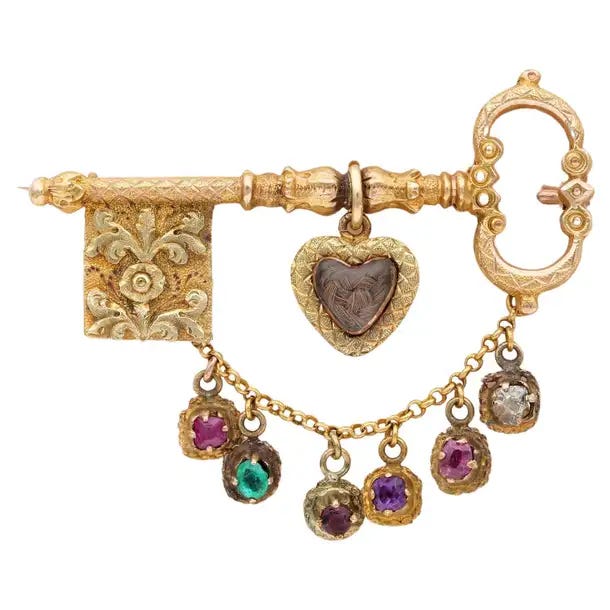
What is an Acrostic?
For non-English majors (myself included), an acrostic is a poem or message in which certain letters in each line form another word(s). Acrostics are all over the place; in poems, advertising, and music!
One of the most famous examples is a lovely poem John Keats wrote about his sister-in-law, Georgiana Augusta Keats, when she married his brother, George:
Give me your patience, sister, while I frame
Exact in capitals your golden name;
Or sue the fair Apollo and he will
Rouse from his heavy slumber and instill
Great love in me for thee and Poesy.
Imagine not that greatest mastery
And kingdom over all the Realms of verse,
Nears more to heaven in aught, than when we nurse
And surety give to love and Brotherhood.
Each first word in each line of the poem ends up spelling G E O R G I A N A vertically!
In jewelry, acrostics take the very first letter of the gemstone that is used to write secret messages or sweet words of endearment! By spelling out a name or loving word in gemstones, the jewelry became even more meaningful. It also allowed people to convey sentiments that were not acceptable to express in public, especially in Victorian England. A lover could spell out a sweet sentiment in precious gemstones as a personal and intimate declaration of love, for their eyes only.
For instance, let’s say you have a ring with five stones. An Amethyst, Diamond, Opal, Ruby, and Emerald spell ADORE – revealing a sentiment of adoration and admiration.
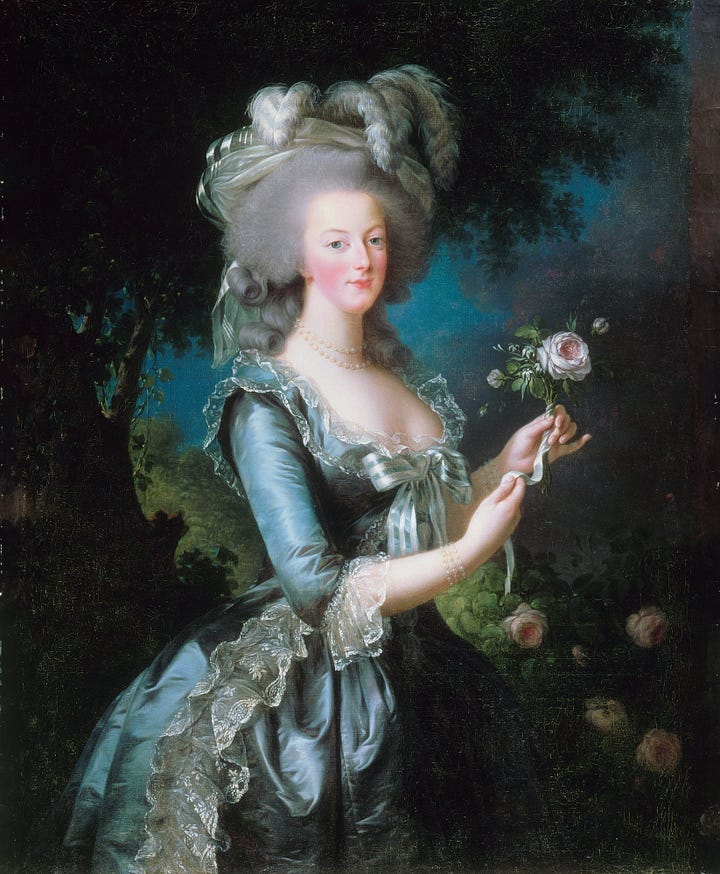
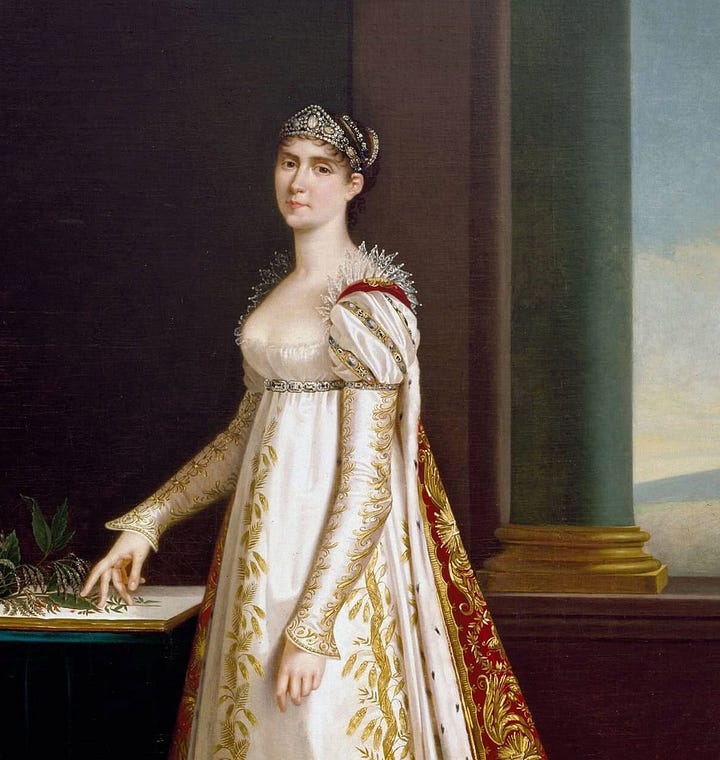
The Language of Gemstones
Although it is largely associated with the Victorians, acrostic jewelry was actually born in the court of Marie Antoinette.1 Invented by the French jeweler, Jean-Baptiste Mellerio (1765-1850), acrostic jewelry was reportedly known as the “language of gemstones.”2 Mellerio is said to have created a ring for the famous French queen that spelled out “j'adore,” French for “I love,” studded with jade, amethyst, diamond, opal, ruby, and emerald.
Napoleon Bonaparte became so enchanted with the trend that in 1806, he commissioned several bracelets for Empress Josephine from his court jeweler, Marie-Étienne Nitot. Founder of the jewelry house Chaumet (1780), Étienne Nitot became the official jeweler of the Emperor and his court in 1802 and was responsible for many of the jewels commissioned under Napoleon’s reign.
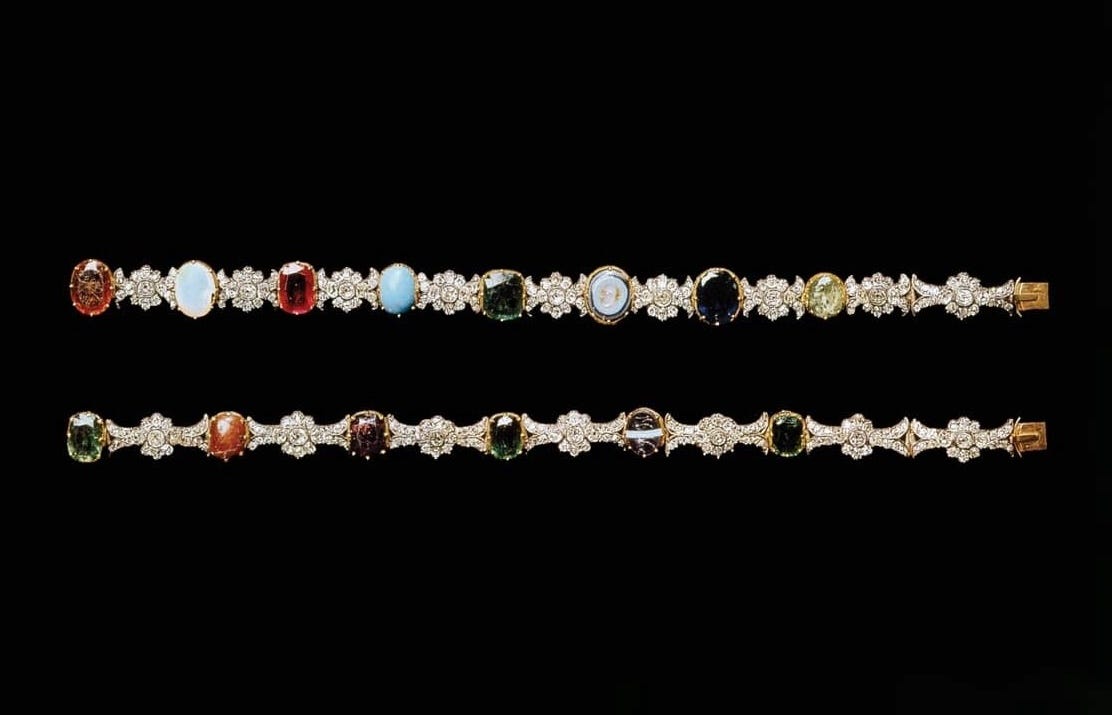
Josephine’s prized bracelets were created to spell out the names of her children: Eugene (Emerald, uniaxial crystal (a crystal with a unique axial structure that does not show light), a garnet, an emerald, a nicolo (a blue intaglio), and emerald), and Hortense (a hessonite, an opal, a ruby, a turquoise, an emerald, a nicolo, a sapphire, and an emerald).3
Acrostic jewelry continued to gain popularity in Georgian England during the 1820s and 1830s and peaked during the Victorian era. “REGARD,” “ADORE,” and “DEAREST” are some of the most popular terms of endearment used for lovers and family members. Gems were also used to spell out birthdays and private messages. Thinking back on this period, the private and sentimental Victorians certainly got creative with their emotional expressions. Queen Victoria even mourned her beloved Albert by wearing a bracelet that spelled out his name in amethyst, lapis, beryl, emerald, ruby, and turquoise.
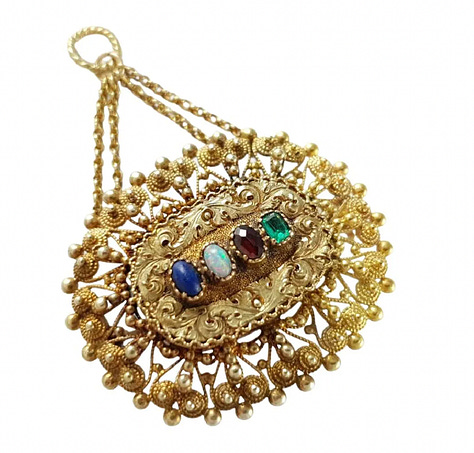
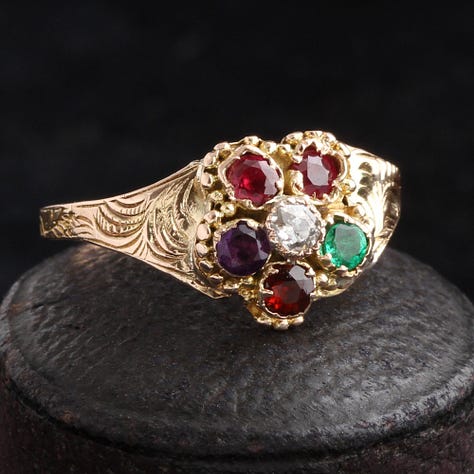
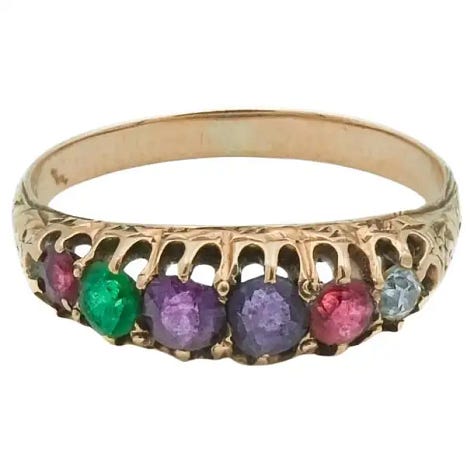
Acrostic jewelry was not limited to rings or bracelets, either. Brooches, pendants, lockets, and more were sprinkled with hidden messages! Many of them even use the stones in creative ways, using them to form different flowers, adding another layer of symbolism.
Pansies and other small flowers were particularly popular, as pansies symbolized thoughts of love and affection, representing the sentiment “think of me.” Later in history, acrostic jewelry was also used to express political views and spelled out words such as “REPEAL” and “SUFFRAGE.”
Acrostic Alphabet
While the list of gemstones has changed a bit throughout the years, there is no hard and fast rule – use whatever gemstone you like to spell out your bejeweled love note! For convenience, here is a list:
A Amethyst, Alexandrite, Aquamarine, Andalusite, Apatite, Amazonite, Amber, Ametrine, Aventurine
B Beryl, Benitoite, Bloodstone
C Citrine, Carnelian, Chalcedony, Chrysoberyl, Coral
D Diamond, Diopside
E Emerald
F Feldspar, Fluorite
G Garnet
H Hematite, Howlite, Hessonite
I Idocrase, Iolite
J Jaspar, Jadeite, Jet
K Kunzite, Kyanite
L Labradorite, Lapis Lazuli, Liddicoatite
M Malachite, Maw-Sit-Sit, Moonstone, Morganite, Moisannite
N Nephrite, Niccolite (Nicolo)
O Opal, Onyx, Obsidian
P Peridot, Pearl
Q Quartz
R Ruby, Rhodochrosite
S Sapphire, Spinel, Sphene, Scapolite, Sodalite
T Tourmaline, Tanzanite, Topaz, Tsavorite, Turquoise, Tiger’s Eye
U Uvarovite, Unakite, Uniaxial crystal
V Variscite, Villiaumite
W Wulfenite
X Xanthite, Xonotlite
Y Yttrium Aluminium Garnet, Yugawaralite
Z Zircon, Zoisite, Zunyite
What message would you compose?
If you enjoy my writing, please consider subscribing to have By Odette delivered to your inbox. Subscriptions are free! But if you’d like to support my writing, I’ve added a “Buy Me a Coffee” tip jar button below. No pressure, and thank you for reading!
GIA, “Secret Messages in Jewelry – Acrostic Jewelry,” published October 12, 2015.
GIA, “Secret Messages.”
The Court Jeweller, “Chaumet in Majesty: Napoleonic Jewels,” published October 28, 2019. Written and edited by the writer and historian Lauren Kiehna.



Fascinating! It’s not gem-related, but I have a Victorian pin I found at a sale that I’d love to know more about—or at the very least share with you. It’s a tiny painting under glass.